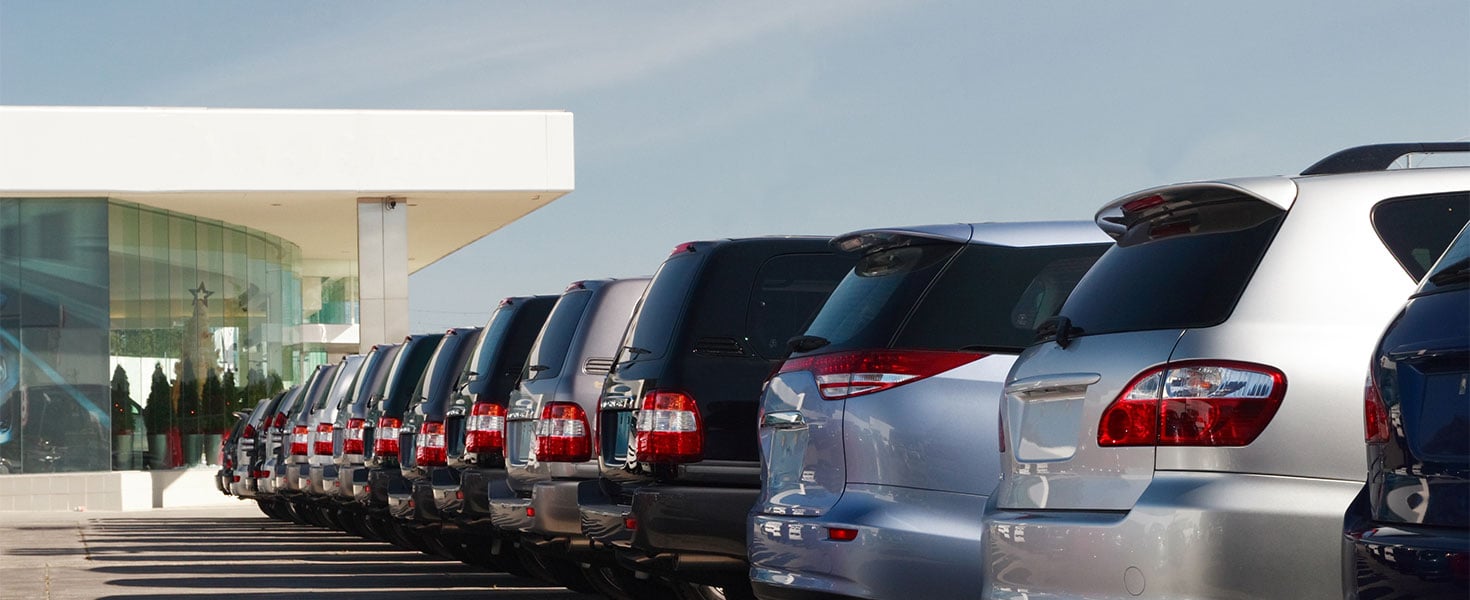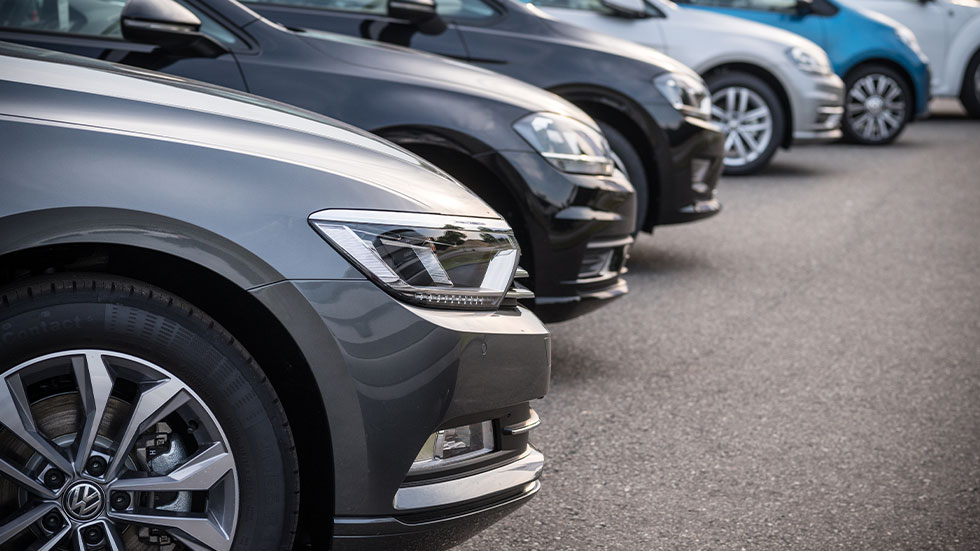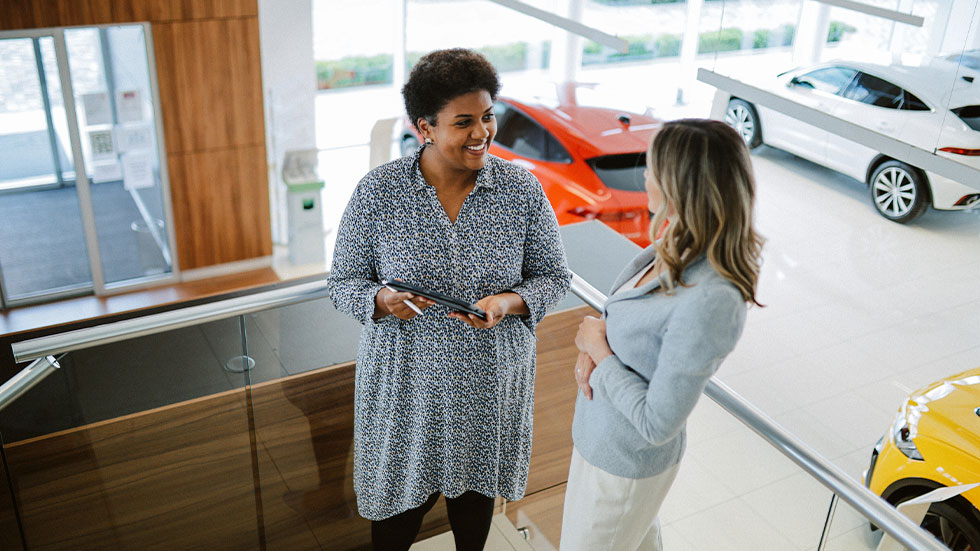How Do Car Dealers Make A Profit?
SEE HOW DEALERS MADE THEIR MONEY IN THE PAST—AND HOW THEY DO IT TODAY. PLUS, WHAT TO EXPECT WHEN YOU BUY A NEW CAR


As the aftereffects of the COVID-19 pandemic continue to send ripples through the automotive landscape, consumers in the market for a new vehicle are accustomed to high sticker prices, low availability, and long wait times for the models they want. Additionally, with some auto worker strikes looming, we may soon see even more high car pricing issues ripple through the automotive landscape.
It makes sense that the savviest of car buyers may be looking for any and every edge they can find to get a deal on their next car, including understanding how car dealerships profit. Developing an understanding of profits may lead to finding wiggle room on price.

HOW DEALERSHIPS MADE MONEY IN THE PAST
While the answer to this question varies depending on size, location, and brand of dealership, the ways dealerships made money pre-pandemic were pretty similar. The numbers below are simply estimates from a 2019 Edmunds.com report:
NEW CARS
According to the National Automobile Dealers Association (NADA), new vehicle departments make up roughly 58% of total sales but less than 26% of the gross profit.
Additionally, dealerships often received "dealer cash," which is an incentive provided by the manufacturer to sell certain models or clear out vehicles to make way for new ones.
USED CARS
While used vehicles only make up 31% of sales, they account for about 25% of the gross profit.
FINANCE & INSURANCE
This department is responsible for financing vehicle purchases as well as providing after-sale products like warranties, service packages, and more. According to the NDA, roughly 90% of new cars and 73% of used cars were purchased with some form of financing or an after-sale product.
SERVICE & PARTS
Service bays and the parts they use to repair and maintain vehicles are a vital source of income for dealerships. Many of the largest, most successful dealerships generate enough income through their service bays to cover the overhead operating costs of the entire dealership.

HOW THE AUTO MARKET HAS SHIFTED SINCE THE PANDEMIC
Pre-pandemic, it was common for most big dealerships to keep at least a 60-day supply of inventory on their lots. But as the pandemic wore on, availability of resources dwindled, travel fluctuated, and consumer demand exploded, the traditional flow of money through dealerships became much harder to assess.
ONLINE SALES
In the not-too-distant past, it would be almost unthinkable to make a purchase as large and significant as an automobile without having set foot on a dealership lot, but thanks in part to COVID-19, many consumers are now doing just that. Every part of the car purchase process, from researching makes and models, to having a car delivered to your home for a test drive, to signing all the sales paperwork digitally and having your new car delivered, has shifted online. And, for the most part, consumers are thrilled with the experience. Progressive surveyed 501 online purchases and found that 97% of respondents would purchase a vehicle online again.
As online sales increase, supply at lots is low, a dealership's need for sales people goes down, meaning less of each car sale will go toward paying commissions, bonuses, and other costs associated with keeping a large sales force.
LOW INVENTORY & HIGH PRICES
With inflation, material costs continue to be high, which contributes to the high sticker prices on today's vehicles. Additionally, supply chain issues with materials like semiconductors continue to plague certain sectors of the auto industry. Plus, as manufacturers shift their offerings from combustion engines to battery powered EV's, the demand for semiconductors goes up even more.
Of course, none of these are new developments to any of us by now. Most consumers understand all too well how supply chain issues affect their own lives after three years of encountering them. And auto dealerships have taken notice. They now understand that consumers will wait for the vehicle they want, they will pay full sticker price for it, and they won't have to keep as much inventory on hand in their lots in order to realize their monthly sales goals. So many experts believe that even after vehicles become readily available, the days of the 60-day supply sitting on a lot may be over for good.
PRE-ORDERING
Dealerships and consumers alike are taking advantage of pre-ordering to ensure that they get the newest make and model of the vehicle they most want as soon as it hits the lot. In fact, a cars.com study recently surveyed shoppers and found that 41% of them planned to pre-order their next vehicle.
So, while the days of the pushy car salespeople may be over and dealerships continue to evolve their business model to meet adverse conditions, it seems the only thing for certain is that adversity is here to stay, at least for the next few years.
